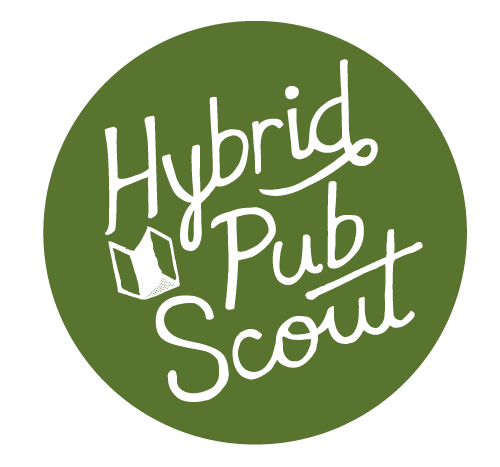You may have noticed in the signature area of my email address, or in my bio on this website, that I have the pronouns “they/them” featured along with my name. You may or may not have colleagues, friends, or family members who use they/them pronouns. (In fact, you probably do, and you might not know it yet.)
For me, the use of they/them signals that I am a non-binary person. That means I am neither a man nor a woman, but something completely different. The way our society is formed now, that can be confusing. Don’t worry—it’s confusing for me too sometimes. However, there are some easy things to remember about interacting with someone like me, and before Pride Month ends, I’d like to provide a little guide for how to do so!
While some people object to this identity and pronoun usage, I find most people are simply nervous about getting it wrong.
It’s understandable—everyone hates to be embarrassed or run the risk of hurting someone. However, part of why I enjoy working with entrepreneurs especially is that we consider ourselves a pioneering, adventurous bunch. If it helps, think of it as learning a brand new skill!
Note: If you’ve got ideological issues surrounding transgender and non-binary folks, please skip to the heading “The Political Elephant in the Room” first for a discussion of my boundaries.
They/Them Pronouns and Grammar
One of the biggest objections I see to using they/them pronouns is that it’s grammatically incorrect. As a writer and publishing services provider, I totally understand why folks may be concerned. Teachers, style guides, and editors have all tried to obliterate the inclination for us to use singular they throughout our lives (although I’d challenge you to examine the way you speak and take note of how many times you unconsciously use it).
The truth is, language changes over time! Style guides, which set up writing rules for different industries and publications, are all currently examining their use of singular “they” and often changing their own approaches. For example, the APA style guide, the Chicago Manual of Style, MLA guidelines, and Merriam-Webster have approved singular they usage in the past few years. If that isn’t convincing enough, I’m not sure what is.
So the million dollar question—how do you use it? Something a little silly that I have found helps some people is telling them to think of me as three raccoons in a trench coat. You’d refer to me the same way you’d refer to multiple people…well, entities. Examples:
Instead of: She says she will have that draft to you by Friday.
Use: They say they will have that draft to you by Friday.Instead of: He is attending this meeting.
Say: They are attending this meeting.
That’s right. It’s exactly the same sentence construction you’d use to refer to a group of people. I definitely can’t speak for other non-binary and gender non-conforming people, but I’m perfectly happy with my clients (respectfully) thinking of me as a cluster of woodland creatures if it helps!
Please note—it can be a good allyship move for people, even people who identify as the gender they were assigned at birth, to put their pronouns in their bios. However, if you are a manager, I’d discourage you from mandating that your employees do so. You may have some who are currently unsure of their gender identity and are not comfortable with discussing it publicly. “Outing” someone—aka., revealing someone’s gender or sexuality against their will—is considered a form of violence, as it can unfortunately lead to harmful consequences in many cases.
Address a Group with More Gender Inclusive Language
Ladies and gentlemen, boys and girls, brothers and sisters, you guys…
We have been trained to use binary gender language in all aspects of our lives. Making your language inclusive is a matter of practice and training, and it doesn’t have to be too big of a headache. Some things you can try instead when addressing a group are:
- Folks
- Friends
- Distinguished guests
- Y’all (I think this is really fun to say)
- [Company] Employees
- [A fun nickname for the folks in the group you’re addressing—be creative!]
Also, referring to a stranger as a “person” (even if they look like a man or a woman) is a great habit. You’re less likely to make a faux pas, and if you happen to be addressing a non-binary or gender non-conforming person, it will probably make them like you more. A lot of us are used to being left out, so it’s nice to be included!
Instead of: The woman in the second row.
Say: The person in the second row [+ a distinguishing feature (red scarf, Nirvana t-shirt, etc.)].
Remember Everyone Has a Different Identity
Not every person who uses they/them pronouns calls themselves non-binary. It’s best not to make assumptions, and probably best not to ask questions unless the information is volunteered.
There also might be an even more complicated dimension where a person lists she/they or he/they in their bio. In those cases, you may ask the simple question, “Do you prefer she or they?” or “Do you prefer he or they?” Respect their answer and do your best to honor it.
If you get someone’s pronoun wrong (called “misgendering”), don’t panic. You don’t need to make a show of apologizing, in fact making a big deal out of it can make things awkward for everyone. Instead, just correct yourself and move on.
Instead of: I gave her…oh, sorry, oh my god I’m so sorry, them…I gave them the link to the folder.
Say: I gave her—them the link to the folder.
We have a lifetime of using exclusively she and he under our belts. You’ll mess up. I still mess up! Unless the person asks for an apology, self-correct and keep moving. If they do ask for an apology, let them have it—it costs you nothing.
Don’t Pressure an LGBT+ Person for Answers
My clients are welcome to ask me questions about non-binary, trans, and gender non-conforming identities and language usage. Not all LGBT+ folks are comfortable talking about their identities, and Black, Indigenous, and other people of color may be especially tired of having to field such questions. Often, questions about identity can feel like the person is being asked to defend their own existence. Since there are a lot of people who don’t like trans or non-binary folks, that can be pretty scary.
I invite and encourage my clients to ask me questions before you approach someone who hasn’t given such an invitation.
However, the best way to go is to do some reading on your own first! Here are some recommendations:
- In Transit: Being Non-Binary in a World of Dichotomies by Dianna E. Anderson
This is an accessible intro book to Queer Theory (note: not all LGBT+ folks are comfortable with this term), which I really enjoyed. The last chapter in particular has helpful tips for people who want to be supportive! - A Guide to Gender Identity Terms by Laura Wamsley (from NPR)
NPR compiled this glossary with help from different LGBT+ organizations. I don’t agree with every single definition on this list, but such is the nature of the conversation.
I’ll be adding more resources in the future!
The Political Elephant in the Room
Unfortunately, the non-binary identity is wrapped up in a culture war that’s taking place right now as part of the transgender community. Things like LGBT+ book bans, attacks on transgender athletes, restrictions against trans medical care, and other human rights violations against trans people do not fly with me. As a queer person and someone who has counseled numerous sexual assault survivors, the incorrect and weaponized use of the word “groomer” to refer to queer people also, frankly, disgusts me.
It would be nice if I could just be “normal” and not have to talk about politics, but as a writer, a queer person, and a human being, it’s important I be honest. These issues are much, much more important than whether or not someone messes up my pronouns.
If you’re of the mind that non-binary or other transgender people are inherently degenerates, liars, or don’t deserve the same rights as everyone else, please do not engage with me. I’ve found that such strong negative opinions are impossible to change with a single conversation, especially online, and the experience ends in very bad feelings. The work I do as a writer often requires personal discussions, so if you hold these opinions, we won’t be a good fit for one another. We don’t have to agree on every single little thing, but if you come at me with a bad faith argument, I will not fight with you. I will simply block you. We both have better things to do.
In conclusion…
More often than outright hostility, I find people just aren’t sure what to do with non-binary folks and are afraid to be chastised for making mistakes. Some LGBT+ folks may act a little pricklier from being burned in the past, or because they’re afraid to be harassed, but do your best to respect them the way you would any other colleague. You can keep growing and learning. If you mess up, you mess up, and you can try to do better next time.
Everyone has different ways of relating to their own identity, so my opinions aren’t the final word by any means. However, if you as my client have good faith questions you want to ask, I’m happy to help!
–



